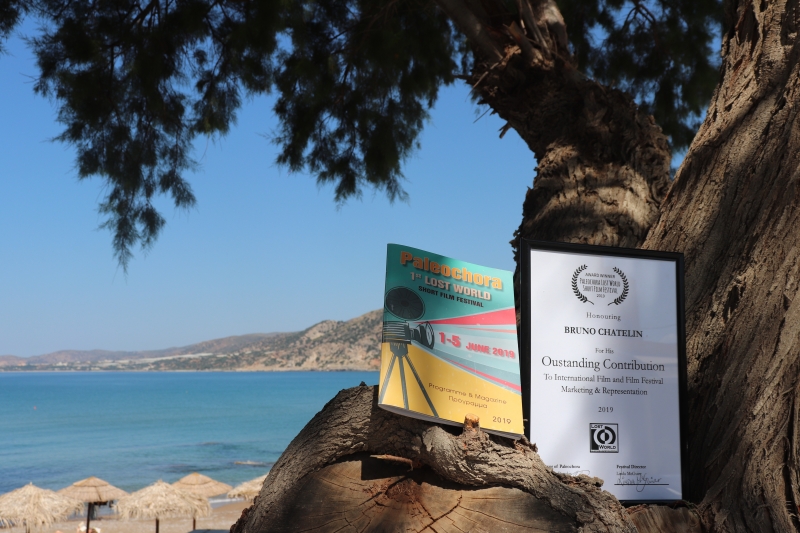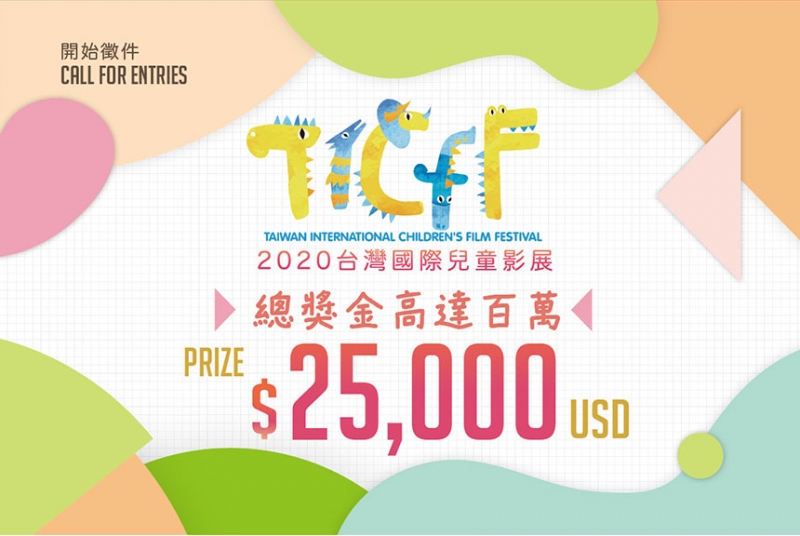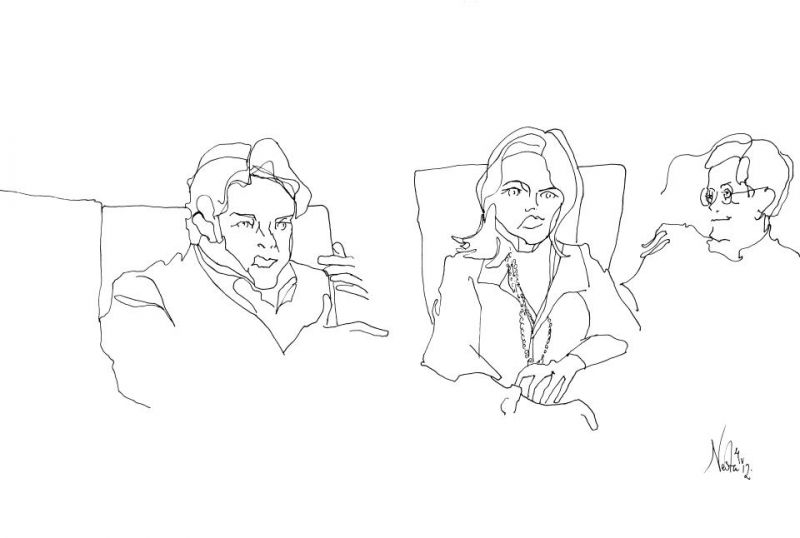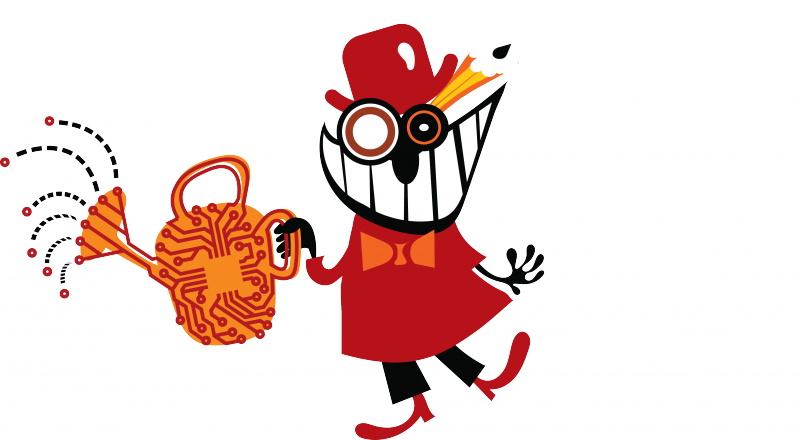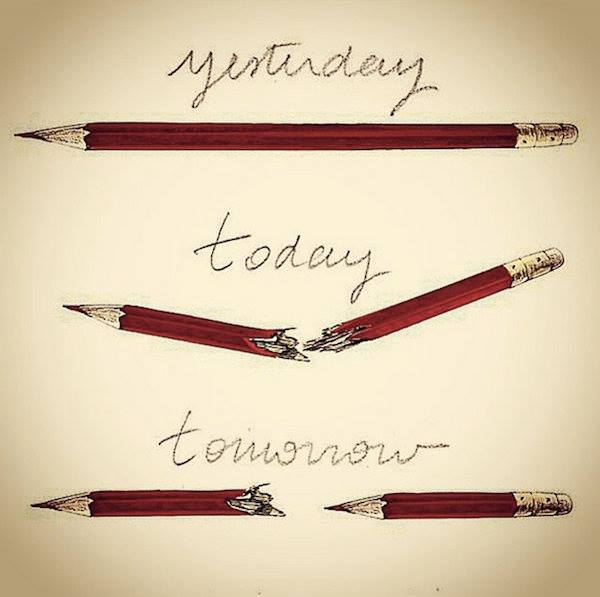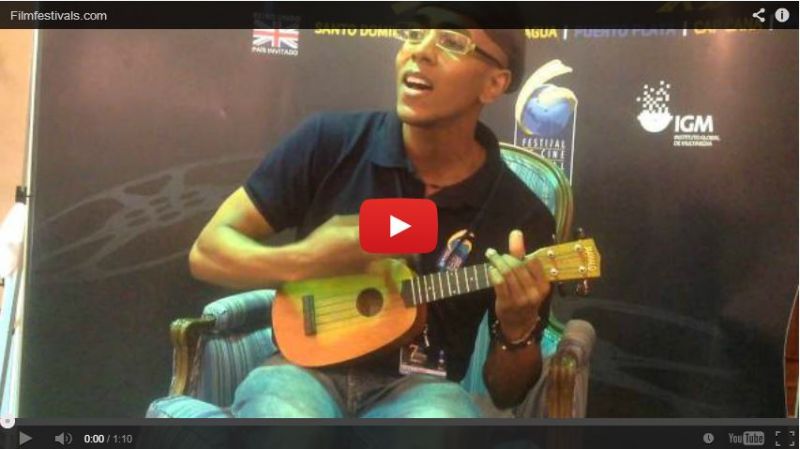2ND WARSAW JEWISH FILM FESTIVAL (MAY 19 -- 25, 2005)
A ROUSING SUCCESS
By Alex Deleon-Pevny
The second convening of the new International Jewish Film Festival in Warsaw proved to be an even bigger success than the first edition a year ago. The official Polish designation, directly translated, comes out as "The Warsaw International Film Festival on Jewish Motifs" which seems to leave room for a broad interpretation of just what it is that counts as a "Jewish film".
Indeed, as we shall see, some of the films which are turning up here might not quite qualify as a Jewish film in a more orthodox festival context, however, Miroslaw Chojecki, the non-Jewish mastermind behind the festival, is himself a veteran documentary film maker and hence requires that the films he selects have something to say cinema-wise, not just motif-wise -- in other words, it isn't enough just to be Jewish in his more artistically and intellectually demanding festival framework.
Basically the festival has sized down, upped quality, has become more selective, has established a solid "Motifs Foundation" as its organizational structure, and has moved over to a real cinema location from the rather makeshift House of Culture venue where the first festival was held. The new home of the Festival is the historical MURANOV Cinema, noted for its Art House programming and located, appropriately, in what was once the heart of the Warsaw Ghetto, the Muranow District. Moreover, because of the special Jewish history of the city the Motifs Festival is already being regarded here as not just another Jewish film festival, but a significant cultural event providing the non-Jewish Varsovian public with an annual venue and context within which to confront and come to terms with an aspect of their own Polish Reality which was a taboo subject during the 40 years of Communist rule -- the immense tragedy of the Polish-Jewish relationship resulting in the brutal extermination of the Jews, on the actual territory which was at the center of the Maelstrom.
Last year some sixty films of all types were entered in competition which is a bit of a load. The competition this year was narrowed down to a more cosy slate of 37 films carefully culled from about 300 submissions, representing 16 different countries. The typology covered full length features, long and short documentaries and some very unusual animations. Nine Phoenix statuettes (the symbol of Jewish culture rising from the ashes) were handed out to winners in diverse categories all for the films themselves, with no personal awards (best actor, director, etc.) which, come to think of it, would be rather out of place in a festival of this special nature. All films were dated from 2003 to the present.
The main award of The Golden Phoenix went (significantly!) to the lengthy but fascinating German feature "Rosenstrasse", (2003) by Margarette von Trotta. This was the only film from what one might call a well-known mainstream director, but within the German mainstream, Ms. Von Trotta (60) is known for films featuring strong women in politically charged situations. In this film based on an actual event which took place during the war in the Third Reich in Berlin, the strong women are a group of Aryan-German women who were married to Jewish-German men. When the men were rounded up for deportation in a building on the Street of Roses (which still exists) the women stood outside for months on end, in all kinds of weather, even during air raids, demanding the release of their husbands, often in the face of armed threats from soldiers of the Wehrmacht. One of them, a countess played in the film by leading German actress Katja Riemann, used her unusual good looks and high level connections to finally obtain the miraculous release of the Jewish prisoners. The tense 135 minute film played before a spellbound packed house, with many standees peering around the pillars along the side aisles of the ancient theater.
Two most unusual feature length documentaries, Miguel Nieto's "The Last Sephardic Jew" (Spain, 90 minutes) and Yale Strom's "L'Chaim Comrade Stalin" (USA, 86 minutes) addressed themselves to the fate of endangered Jewish language species, namely, Ladino and Yiddish. Nieto’s film, which was made
for Spanish television, investigates the current status of the medieval form of Spanish which the Jews of Spain carried with them to countries all around the Mediterranean after the expulsion of the Jews from Spain in 1492. He follows a young Sephardic Rabbi, Eliezer Papo, of Sarajevo around all along the Sephardic trail from Saloniki, Greece, to Sarajevo Bosnia, to Istanbul, to Jerusalem, finally back to Toledo in Spain, the city which was once the center of the culture, and even to a far-flung outpost of this fading language on the island of Curacao in the Caribbean. Along the way various surviving speakers of the language are interviewed expressing their determination to keep the Ladino language and Sephardic culture alive. Beautifully shot in all the diverse locations this is not only an excellent documentary, but also a valuable contribution to Sephardic studies. Mr. Nieto who is not Jewish but is an historically minded journalist says he was attracted to the subject because of a general interest in the monumental landmark year of 1492 during which not only the Jews but also the Moslems of Spain were expelled and, of course, the year in which Columbus set sail from Spain to “discover” an entire New World.
Yale Strom’s film is basically a journey via the Trans-Siberian Railway to the remote Russian province of Birobidjan which was established in extreme far eastern Siberia as a so-called “Jewish Soviet Homeland” with Yiddish as the official language. In fact, it turns out that the real idea behind this was not any great love for Jewish culture, but rather Stalin’s diabolical idea of first getting the “untrustworthy” Russian Jews as far as possible away from the Muscovite heartland, concentrating them in this woebegone remote area of the Soviet empire, and then … in due time --exterminating them! Fortunately, Stalin kicked the bucket (1953) before he had time to implement his own private Final Solution. Though the Jews of Birobidjan continued to use the Yiddish language they were so highly Russified that one young man interviewed in the film, a Yiddish teacher by avocation, admits that he hadn’t even heard of the holiday “Rosh Hashana” (Jewish New Year) until he was 28 years old and a non-Jewish friend wished him a ‘”Happy New Year” in mid September.
Most of the Jews of Birobidjan, including once wide-eyed "pilgrims" from other countries, have long since left the country, but a hard core of Russian Yiddish speakers remain, clinging to their Yiddish and hoping for some kind of miracle to keep the language from dying out completely. Extremely poignant are the various expressions of open anti-Semitism Mr. Strom encountered all along the way. An unofficial interpreter who attached himself to the filmmaker on the train insisted that there is no such thing as Anti-Semitism in Russia while coming up with such doozies as “Jewish Communists were not real Communists” and were a kind of "Fifth Column" in Soviet Russia. This pleasant chap turned out to be a grandson of a former Soviet president, Kalinin. Strom’s film would probably make Stalin turn over in his grave and has been awarded numerous prizes around the world.
Here in Warsaw it was awarded with a Silver Phoenix and Mr. Strom, among other things an accomplished musician, was on hand to regale the post projection crowd with an impromptu session of hot Jewish fiddling.
A special Phoenix for the Best "Polish film" was awarded to "Anya - in and out of focus" by Jewish -Polish emigré director Marian Marzynski for his 91 minute documentary about his American-born daughter which was shot in bits and pieces over a thirty year period! We watch Anya, the product of a mixed marriage (for her mother is a Polish "Aryan" grows from a cute bouncy little girl into a mature woman of thirty. She becomes quite a rebel and neither Jewish daddy of Polish mom are too happy about her numerous liaisons with the Afro-American boys she brings home from school. They send her off to Israel to get "straightened out" and she comes back enamored of the country. But then she’s off to Paris for a teaching job. There she meets a young Ethiopian chap from England and ends up marrying him and giving birth
to a coffee colored baby. At last report this inter-racial, inter-cultural couple have taken a job in Beijing, and according to Mr. Marzynski that’s where they are today. Talk about an off-beat film about Tolerance -- well this is it. Marzynski was, incidentally, a prominent TV director in Poland before immigrating to Chicago in 1974 and this is definitely no home movie. In fact, even though it's basically a documentary, it reads like a feature film where truth is stranger than fiction and Jewishness is stretched to the limit.
”The Holocaust in Hollywood Films” by Daniel Anker, USA, is a 90 minute documentary tracing the evolution of the representation of the Holocaust in Hollywood from the reticence of the thirties to chindler’s List in the nineties. Paradoxically, the Studio Moguls such as Sam Goldwyn and the Warner Brothers, all of eastern European Jewish origin, did not want to rock the boat of their new found Americanism and refrained from directly showing what was going on in Europe under Hitler, or in specifically naming the Jews as his preferred victims. Germany was also an important market for American films in the thirties and the studios were loathed to endanger this market by exposing the evils of Naziism. Nevertheless some little-known ‘B’ movies told it like it was, but it was primarily independent filmmakers such as Charly Chaplin in “The Great Dictator” who came out with obvious condemnation of the Nazis and Hitler. The film is replete with excerpts from such films including Chaplin’s fabled floating globe ballet from “The Great Dictator”. This is a documentary so rich in astonishing historical revelations that it leaves the viewer hungering for a “Part II”.
ANIMATION
A spate of unusual animation films was led off by Australian Jack Feldstein’s “The Loser Who Won”. This is an rib-tickling fictional short story of a pathetic wimp who can’t find a girl friend. An old woman with a bent for matchmaking fixes him up with a succession of prospects but he keeps flubbing the dub. She tells him to stop acting so Jewish, but when he protests that he isn’t Jewish she says, “Well you look Jewish!” Eventually he finds his true love, or is rather found by her -- with much coaxing from the matchmaker. What is striking about this film is the animation process which Feldstein has developed completely on his own. This consists predominantly of colorful neon silhouettes against a black background interspersed with all kinds of neonized images from American cartoons such as “Daffy Duck”. The visual impact itself is hilarious and, says Jack, “It’s all done by computer”. He calls it a kind of cross between Woody Allen and Las Vegas. When somebody from the audience said “Very nice film, but it’s not very Jewish – so why was it chosen for this festival?” Mr. Feldstein replied, “The broad-mindedness of the selection committee” – and you can take that to the bank!
'Line of Life" animation, 12 minutes, by Serge Avedikian, with drawings by Belgian artist Raymond Delvax, picked up a bronze Phoenix funded by Polish Television, S.A. This was prize number 26 for this amazing short film in its brief life so far. A startling twelve minutes telling the story in screaming, primitively drawn black ink images, of a concentration camp inmate who records the living hell of the camp in these instant portraits and keeps on drawing even when his hands are cut off -- with his stumps! A guard catches him but is so fascinated by the truth of the drawings that he does nothing, and is himself hanged, for collusion with the inmates. The last image is a scrawled black line remaining on the rubble of the camp – whence the title of the film.
In the “Hollywood Holocaust” film the point was repeatedly made that the Holocaust is such a profound personal experience that it can only be banalized by attempts to capture it on film." This may be true for such films as "Schindler's List" et al, but Serge Avedikian has succeeded where others have failed in much the same way that Picasso captured the horror of Gernika in graphic images. In the post screening discussion, Mr. Avedikian, who, as an Armenian from Yerevan knows something about Genocide -- (the genocide of the Armenians in Turkey in 1915) - was, however, quick to note that although, for obvious reasons, most viewers associate the images of his "Living Line" with the German death camps, his intention in making the film was broader in scope. In fact, says, Avedikian, this is also a statement against the suppression of art in Totalitarian societies, such as the Soviet one in which he was raised.
Shown immediately preceding was Marek Pacholec's "Serso/Red Hoops", an eight minute piece of animation employing a computer based technique in which scanned photographs are made to pass each other by on a series of planes at visual depth. The inspiration for the film was inspired by Golda Ten's album "I still see their faces -- Images of Polish Jews". Tencer is one of the leading singers and actresses of the Warsaw Yiddish theater. "Hoops" made a kind of fitting overture to the Avdekian film which followed.
Two films with Peter Coyote
Oddly enough the very off-beat American character actor, Peter Coyote, turned up in two feature films. In “The Hebrew Hammer”, an obvious Jewish takeoff on the Black-Xploitation landmark film "SHAFT" with a Hebraic equivalent known as "The Hebrew Hammer", a mighty ass kicker in the urban jungle – but reminiscent in style of such ‘D’ movies as “The Toxic Avenger” – Coyote appears as a Moshe Dayan type villain wearing an eye patch inscribed with a Mogen Dovid (star of David). All one can say about this
one is that eventually somebody had to do something like this. Outrageous and funny in parts, but with a pimply teenage sensibility and sense of humor (Yuck-yuck) and many many cuts below the true trash level of a John Waters.
In “the Actor”(Le Grande Role) , a French film about the making of a Yiddish film version of “The Merchant of Venice”, Coyote plays the part of a world famous Jewish Film Director, "Grunchenberg" who speaks abominable pseudo-Yiddish but has decided to make this film in France anyway. The Hero of the piece, an unknown second class actor who desperately aspires to the role of Shylock, is actually chosen, but is aced out at the last minute when the preferred actor for the part becomes available. The poor guy has told his beautiful young wife who is dying of cancer that he got the part and the body of the film deals with the ongoing deception mounted by him and his buddies to make her last days happy in the knowledge that Maurice is now a star. The actor and his buddies kidnap director Coyote who, against his better judgement, finally agrees to visit the dying lass and tell her what a great Shylockr her husband is. Interesting idea but too much idea and not enough cinematic credibility. Noteworthy, however, for the bits and pieces of Yiddish which turn up throughout and the rather compelling performance of Stephane Freiss as Maurice ("moishe") the wannabe Shylock.
The festival closer (non-competing) was a new documentary “The Legacy of Jadwebne” about the murder of all the Jews in this small Polish town on July 18, 1941, less than a year after the German invasion. The kicker is – and it has been an open sore on the Polish collective consciousness ever since the actual facts were disclosed a few years ago – that the killers were not the German occupiers, but the good Catholic towns people themselves. 1,500 Jews were herded into a barn and the building set on fire burning them
alive. For some forty years (as in the casse of the Katyn Massacre of Polish officers by the Russians) a conspiracy of silence put the blame on the Germans. In this film various people are interviewed, some cautiously admitting to the truth, others, among them a pig-like Catholic priest, insisting that it was really the Germans and the attewmpt to finger the Poles that did it is Jewish propaganda from Yad-Vashem! Ugh. After the film which was a true shocker for the mostly Polish assemblage one local unrepentant Fascist got up to protest that “such a lie” should not be shown here. He was immediately shouted down and told to leave the premises – just one indication of the consciousness expanding effect this festival is beginning to have here.
Incidentally, legendary Polish director Andrzej Wajda, (79) who was a constant presence at the festival, revealed to me over coffee that his next project will be a feature film about the Katyn Massacre of Polish POWs in WW II and the four decade Russian coverup of this egregious violation of international law. A film on this subject by the dean of Polish directors could easily place a certain strain on Polish Russian relations, but then, Mr. Wajda has never been one to shy away from touchy subjects. (Such as "Man
of Steel" shot in the midst of the Solidarity riors in Gdansk in 1981 with Lech Walesa, who would later be president, playing Himself)
The bottom line is that the Warsaw International Film Festival on Jewish Motifs is alive and well, on solid footing, and under the astute guidance of Mirek Chojecki, is evidently destined to become one of the more prestigious festivals of its kind in coming years.
Alex Deleon-Pevner
Warsaw
 Chatelin Bruno
Chatelin Bruno 

















